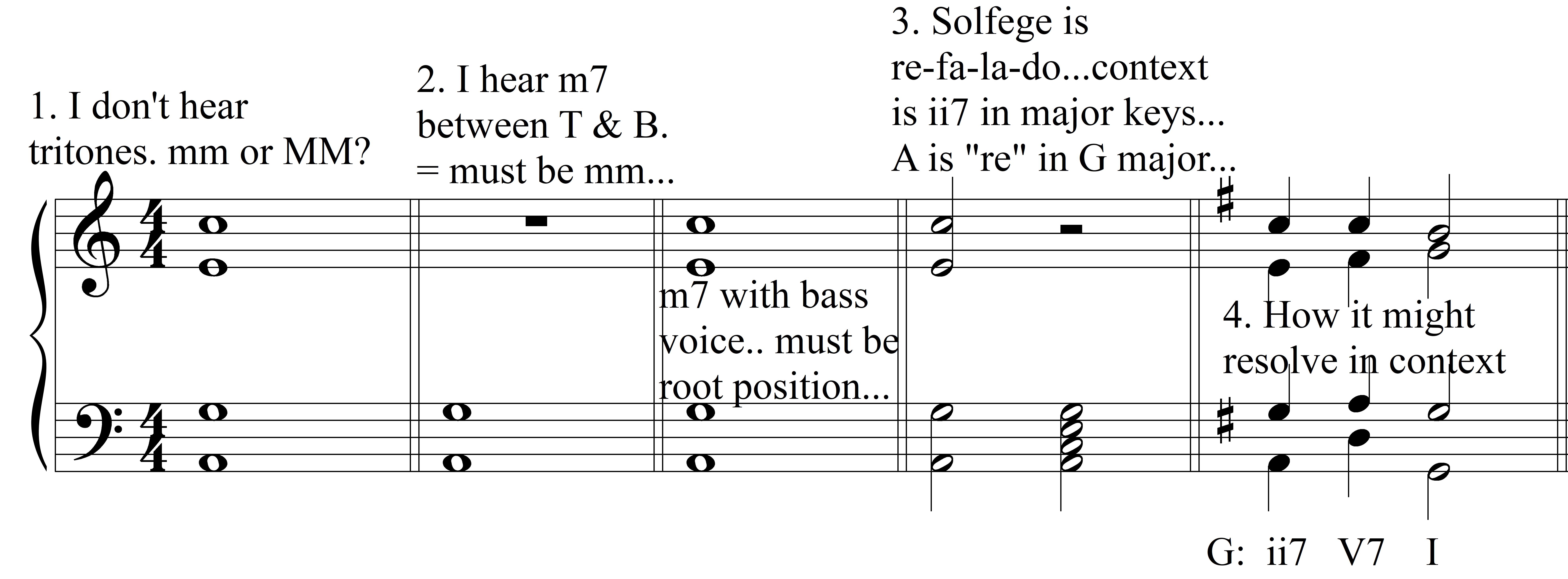Integrated Aural Skills 2019-20
Compound Seventh Chords and the Harmonic Big Picture
Finding Your Own Picture Through Piano Improvisation
A big step in the cultivation of a professionally trained ear is to be able to make your own harmonic contexts for compound seventh chords by memorizing and internalizing how they work in music.
In Unit 27, we practiced on the piano how seventh chords typically resolve. This week, we will take our practice to a new level of independence by having you improvise your own “solutions.”
This chapter will walk you through the kind of thought process that will lead to this kind of contextualized chord recognition.
Tips for Success
- Review your solfege for every seventh chord until it is indelibly memorized.
- Review the table from Unit 25 that details the intervallic relations within all the compound seventh chords.
- Review the harmonic functions of the seventh chords. There is more than one function for some of them.
- Play seventh chords on the piano a lot. This will get you in the right headspace for success. Don’t worry if you are a poor pianist or improviser. If you struggle to play the piano accurately, just play slowly.
Case Study 1
In this example, the student listens to all the intervallic relations and imagines a predominant context for the chord. The bassline – re, sol, do – is particularly helpful to imagine here.

Case Study 2
In this example, the student first considers two chords that are often mistaken for each other, but using interval recognition, determines that it’s not fully diminished because of the presence of the major third. Still, they still have to figure out the inversion. By relating the bass voice to the known spelling of the solfege for the chord, they are able to determine that the chord is inverted. Now all that remains is to identify the chord as a predominant in a minor key – using the bassline fa, sol, do to form a cadence.
- Worried about your voice-leading skills? That’s OK. Even if you’re only able to improvise a hypothetical bassline, that’s all you need for determining the inversion of the chord.
